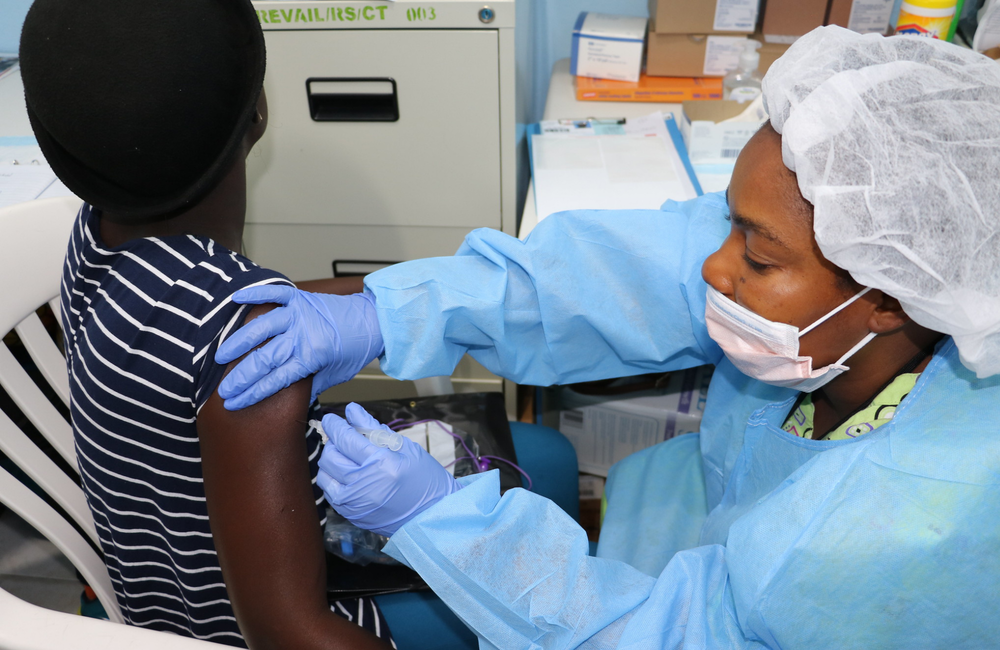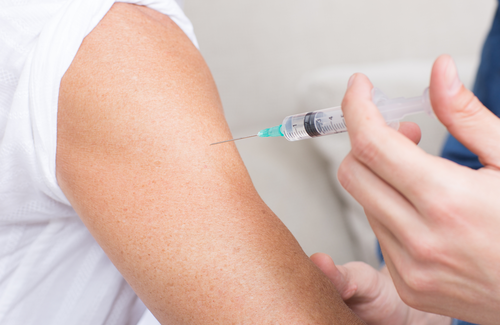
A study by Dr Gui Liu of the University of Washington, Seattle and colleagues published in the journal AIDS found that among women in sub-Saharan Africa, the risk of HIV acquisition increased with the number of human papillomavirus (HPV) infections. With each additional HPV type detected, HIV risk increased by 20%.
The nested case-control study also showed that infection with HPV strains that are preventable by vaccines doubled the risk of HIV acquisition. The authors suggest that increasing HPV vaccination coverage could potentially reduce HIV incidence in sub-Saharan African women.
Background
Adolescent girls and young women aged 14–25 years in sub-Saharan Africa represent only 10% of the population but accounted for 25% of new HIV infections in 2017. One of the highly prevalent biological factors that increase their susceptibility to HIV may be HPV, a sexually transmitted infection (STI) which causes cervical cancer. In Africa specifically, 36% of adolescent girls and young women have HPV.
HIV transmission during sex occurs primarily across mucosal linings in the vagina (or anus). Normally, the cells in mucosal linings are tightly interlocked, forming a protective barrier. Even under normal conditions, HIV can cross this barrier, but it is possible that proteins released during the body's immune response to HPV may disrupt or loosen the tight connections between cells, weakening the barrier's integrity and making it easier for HIV to sneak across.
HPV vaccination programmes are being scaled up in sub-Saharan Africa in order to eliminate cervical cancer and promote well-being among women and girls. However, misconceptions about HPV vaccines continue to contribute to sub-optimal demand despite their excellent safety profile. A study in Cameroon and Uganda found that fear of infertility was the major reason for hesitancy, while in Kenya 25% of parents would reject the vaccination because of perceived promiscuous behaviours in their daughters after vaccination. Religious leaders also contribute to community attitudes. Up to 29% of parents in Kenya said they would not vaccinate their daughters because their religion prohibits them. The Kenya Catholic Doctors Association (KCDA) has publicly argued that the vaccine “has adverse effects” and that “children who are chaste need not worry about contracting HPV”.
Although the role of other STIs in increasing HIV risk is well established, data on the association between HPV and HIV acquisition are relatively scarce. To evaluate this relationship, the researchers used data from the Vaginal and Oral Interventions to Control the Epidemic (VOICE), a randomised controlled trial in South Africa, Uganda and Zimbabwe which assessed the efficacy of PrEP in sexually active cisgender women at risk for acquiring HIV.
The VOICE trial was conducted between 2009 and 2015, and enrolled HIV-negative women aged 18–45 years who were using contraception and were not pregnant. Participants were assessed for STIs and vaginal infections at enrollment, at annual follow-up visits and when clinically indicated. They also underwent HIV testing monthly with a rapid test, which, if positive, was followed by a confirmatory western blot test. Cervical and vaginal swabs were collected every six months, though the swabs were not tested for HPV in real time. During the VOICE trial, HPV vaccines were not widely available and participants were not offered them.
The study
To establish a clear relationship between the detection of HPV and HIV acquisition, the selection criteria for the case–control analysis included having a stored cervical or vaginal swab specimen that was collected between one and six months before a HIV-positive result.
Of the 312 participants who acquired HIV during the VOICE study, 138 met the inclusion criteria. Each case was matched to three controls from VOICE, based on study visit, age and study site. Cases and controls were on average 23 years old at enrollment.
HPV infection was examined in several ways: infection with any HPV type, infection with any of the 14 high-risk types, infection with any high-risk type other than HPV 16 or 18, and infection with any of the low-risk types. To examine the association of vaccine-preventable HPV types on HIV risk, researchers additionally defined exposure as infection with either of the types targeted by the bivalent vaccine (HPV 16 or 18), infection with any type targeted by the quadrivalent vaccine (HPV 6, 11, 16, 18) and infection with any type targeted by the nonavalent vaccine (HPV 6, 11, 16, 18, 31, 33, 45, 52, 58). They also evaluated the dose–response relationship between HIV acquisition and the number of HPV types detected.
To determine estimates of risk, the researchers adjusted the following behavioural and demographic factors: age, education, condom use, number of sex partners, having transactional sex in the past year, having a current primary partner, the participant or her partner having other relationships outside of their partnership, STIs, HSV-2, and other vaginal infections.
Relationship between HPV infection and HIV acquisition
The prevalence of HPV infection was high in the study sample regardless of HIV status, with infection with any HPV type detected in 84% of cases and 65% of controls. Cases had an average of three HPV infections, whereas controls had an average of 1.9 infections.
The risk of HIV was 2.7 times higher with a high-risk HPV infection compared with no high-risk HPV infection, and 1.8 times higher with a low-risk HPV infection compared with no low-risk infection.
For vaccine-preventable HPV infections, HIV acquisition was associated with infection with any of the types targeted by the nonavalent vaccine and the quadrivalent vaccine. The risk of HIV was elevated with infection with a single HPV type (1.9) and increased with the number of HPV types detected. For two to three HPV types, 2.2 times, and for four or more types, 4.1 times. With each additional HPV type detected, HIV risk increased by 20%.
Conclusion
“We found that concurrent infection with multiple HPV types significantly increased HIV risk. Specifically, the risk of HIV acquisition increased by 20% with each additional HPV type detected”, the researchers conclude.
“In countries with a high burden of both HPV and HIV infections, widespread implementation of HPV vaccination with the nonavalent or the quadrivalent vaccines may potentially have the dual benefit of concurrently reducing risk for HIV and cervical cancer among women.”
Liu G et al. Prevalent human papillomavirus infection increases the risk of HIV acquisition in African women: advancing the argument for human papillomavirus immunization. AIDS 36: 257-265, 2022.
DOI: 10.1097/QAD.0000000000003004
Full image credit: Ebola Vaccine Study in West Africa. Image by NIAID. Available at www.flickr.com/photos/niaid/33085205143/ under a Creative Commons licence CC BY 2.0.

